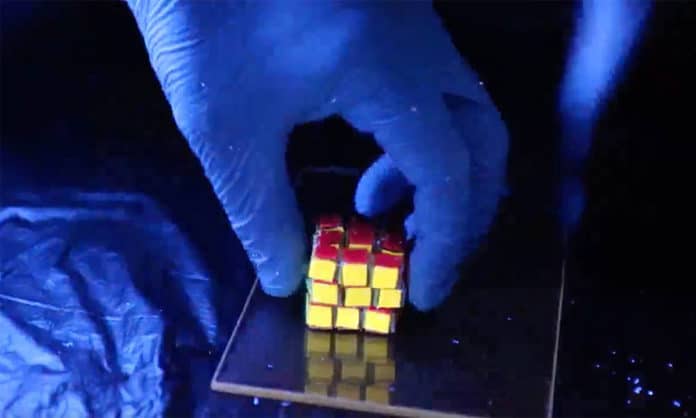A team of chemists from the U.S. and China has constructed a squishy Rubik’s cube from polymers, to store and detect information, and possibly even help patients monitor their medical conditions.
Much more like a toy, the cube contains rotatable individual rows and columns; controlling these changes the color pattern on the cube’s six faces. But unlike the inflexible plastic of a Rubik’s Cube, this new structure is made of a self-healing hydrogel, a squishy polymer material that can absorb a lot of water and form new chemical bonds when old bonds break.
Originally, scientists were searching for new ways to encode information into physical objects.
Jonathan Sessler, a professor of chemistry at The University of Texas at Austin said, “Think of QR codes, which are patterns of black and white pixels on a two-dimensional surface used to store information. We’re exploring ways to encode information in patterns of color and in three dimensions, theoretically leading to a much higher information density.”
“Mathematicians estimate that there is about 43 quintillion—that is 43 times 10 to 18th power— unique configurations of a Rubik’s Cube, suggesting one cube could store an immense measure of data.”
“Over a short time, you can manipulate the interactions between the little blocks. It’s sticky, but they aren’t getting stuck. Then over a longer time, say 24 hours, the structure locks into place.”
When parts of a self-healing hydrogel are destroyed and after that reattached in an alternate direction, new chemical bonds structure to hold it in the new setup. One of the difficulties with making the new squishy Rubik’s Cube was to make the bonds weak enough that rows could be effectively pivoted by hand, yet strong enough for the whole structure to retain its shape.
Further development will be required before the development can be applied to data storage, or for other applications, for example, in wearable sensors monitoring patient’s chemical changes, for instance, in somebody with diabetes.
Sessler said, “Now, with this new Rubik’s Cube, all we have to do is pull it apart and stick the blocks back together where we want. We can solve the problem in seconds by using the power of chemistry to cheat.”
The study published in the journal Advanced Materials.
